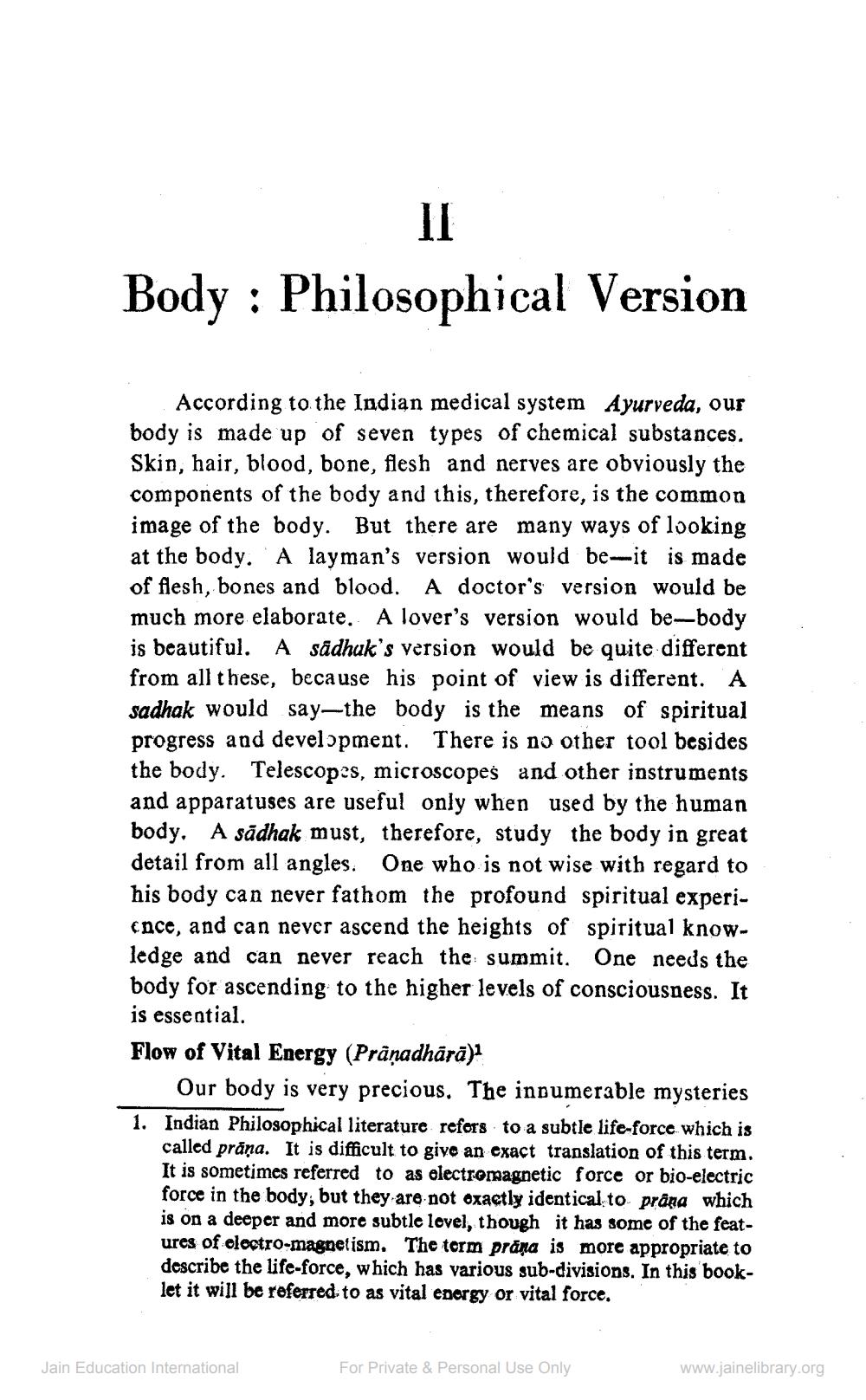________________
Body : Philosophical Version
According to the Indian medical system Ayurveda, our body is made up of seven types of chemical substances. Skin, hair, blood, bone, flesh and nerves are obviously the components of the body and this, therefore, is the common image of the body. But there are many ways of looking at the body. A layman's version would be-it is made of flesh, bones and blood. A doctor's version would be much more elaborate. A lover's version would be-body is beautiful. A sadhak's version would be quite different from all these, because his point of view is different. A sadhak would say the body is the means of spiritual progress and development. There is no other tool besides the body. Telescopes, microscopes and other instruments and apparatuses are useful only when used by the human body. A sādhak must, therefore, study the body in great detail from all angles. One who is not wise with regard to his body can never fathom the profound spiritual expericnce, and can never ascend the heights of spiritual knowledge and can never reach the summit. One needs the body for ascending to the higher levels of consciousness. It is essential. Flow of Vital Energy (Prāņadhārā)"
Our body is very precious. The inpumerable mysteries 1. Indian Philosophical literature refors to a subtle life-force which is
called prāņa. It is difficult to give an exact translation of this term. It is sometimes referred to as electromagnetic force or bio-electric force in the body, but they are not oxactly identical to präna which is on a deeper and more subtle level, though it has some of the features of olectro-magnetism. The term präna is more appropriate to describe the life-force, which has various sub-divisions. In this booklet it will be referred to as vital energy or vital force.
Jain Education International
For Private & Personal Use Only
www.jainelibrary.org




